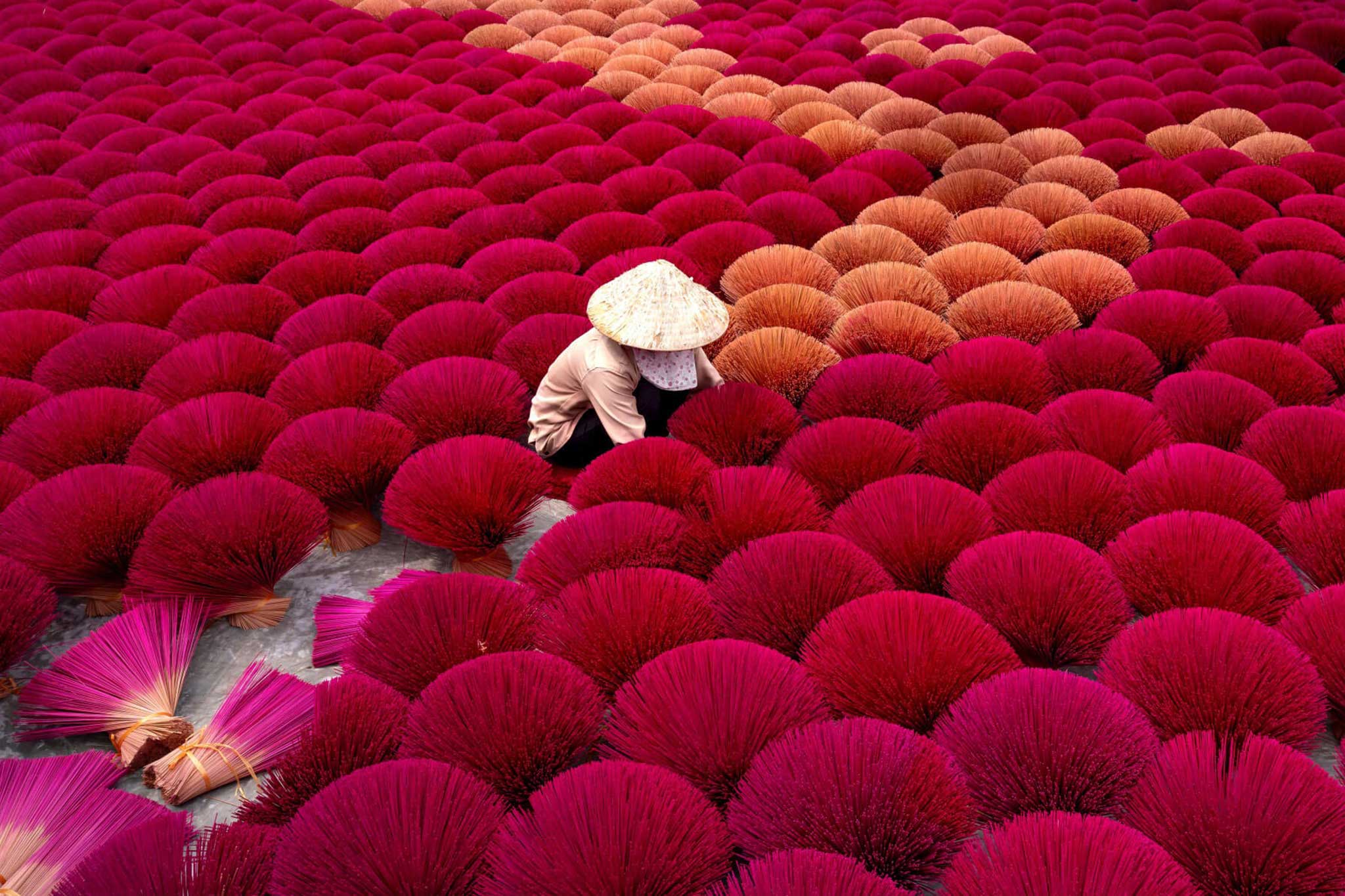Incense sticks have long become a cultural feature indispensable in the thinking of Vietnamese. It is an invisible bridge that connects living souls with the spiritual realm of heaven and earth. Hue (Huế) is the land of spirituality and Vietnam’s Buddhist capital which remains and develops traditional incense making.
When coming to Thuy Xuan incense village – the oldest of its kind in Vietnam, which is located about 7 kilometers to the southwest of the ancient imperial city of Hue, visitors are often impressed by the aroma of aloeswood as well as the image of countless bouquets of bamboo incense sticks of various colors being sundried along the village’s roads.
According to the oldest artists in Thuy Xuan incense village, the craft of making incense here has existed for about 700 years under the Nguyen Dynasty. In the past, this was the place that provided incense for the Court, the nobility and people in Hue regions. The traditional craft has been passed down for generations of Thuy Xuan villagers, not only providing them a livelihood but also constituting a part of their spiritual life.
The making of incense sticks must go through a traditional process of various steps, including preparing raw materials, mixing aromatic paste and rolling the paste around the bamboo sticks. To ensure the quality of their products, Thuy Xuan villagers use only natural non-toxic ingredients to prepare aromatic paste: pine buds, cinnamon barks, clove roots, eucalyptus barks, star anise pods and cardamom seeds. Dried pomelo skin and flower powders are sometimes added to the formula to enhance the fragrances.
It is only in Hue that visitors can see such colorful and aromatic displays of incense sticks and the enthusiastic welcomes of the local people. In there, you can see ingredients and the stages of making incense by hand. Moreover, you will have a chance to take part in making an incense stick with the local artisans; thereby learn and feel more about traditional Vietnamese life.

